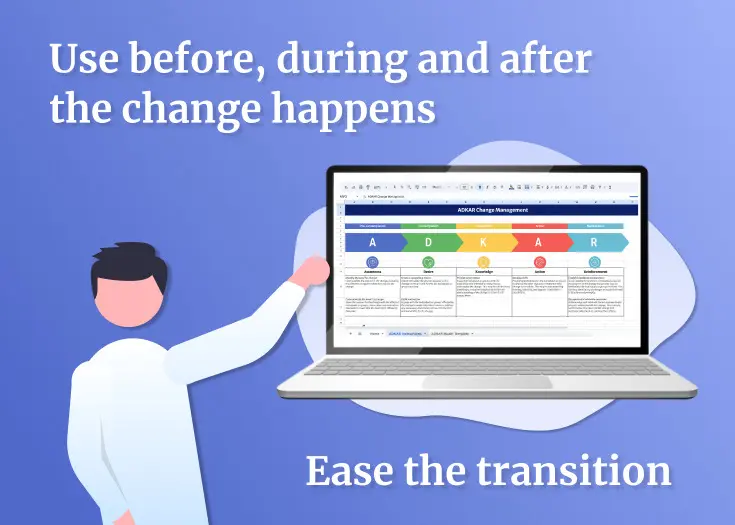Well done, everything is ready to sail!
You can access your ADKAR Template at any time
How the ADKAR Change
Management model can help?
Stand out and make a difference in the new ultra-competitive markets with this free template.
Jeff Hiatt, an entrepreneur and change management expert, developed the ADKAR model in the late 1990s as a framework to assist organizations in effectively managing change. This model centers around five pivotal stages – Awareness, Desire, Knowledge, Ability, and Reinforcement – which are crucial for successful change management.
By utilizing ADKAR, companies can effectively address key areas of change and benefit from a clear transformation framework. Prominent organizations such as Procter & Gamble and NASA have leveraged ADKAR to navigate change and achieve their desired outcomes. As a widely adopted change management model, ADKAR continues to empower companies in overcoming challenges associated with change.







